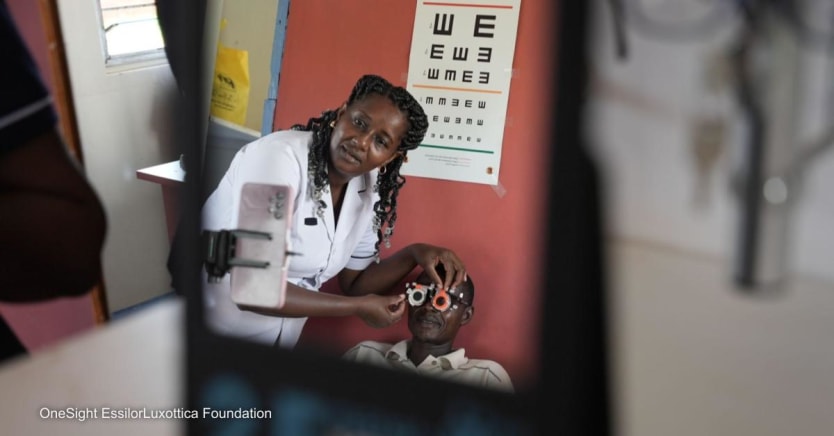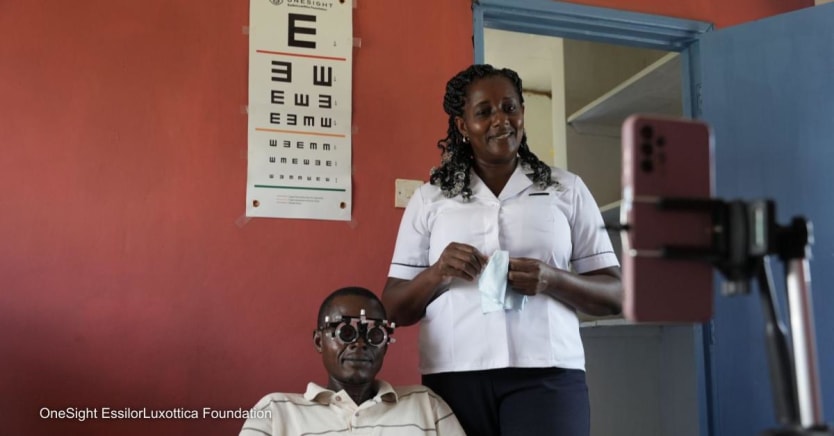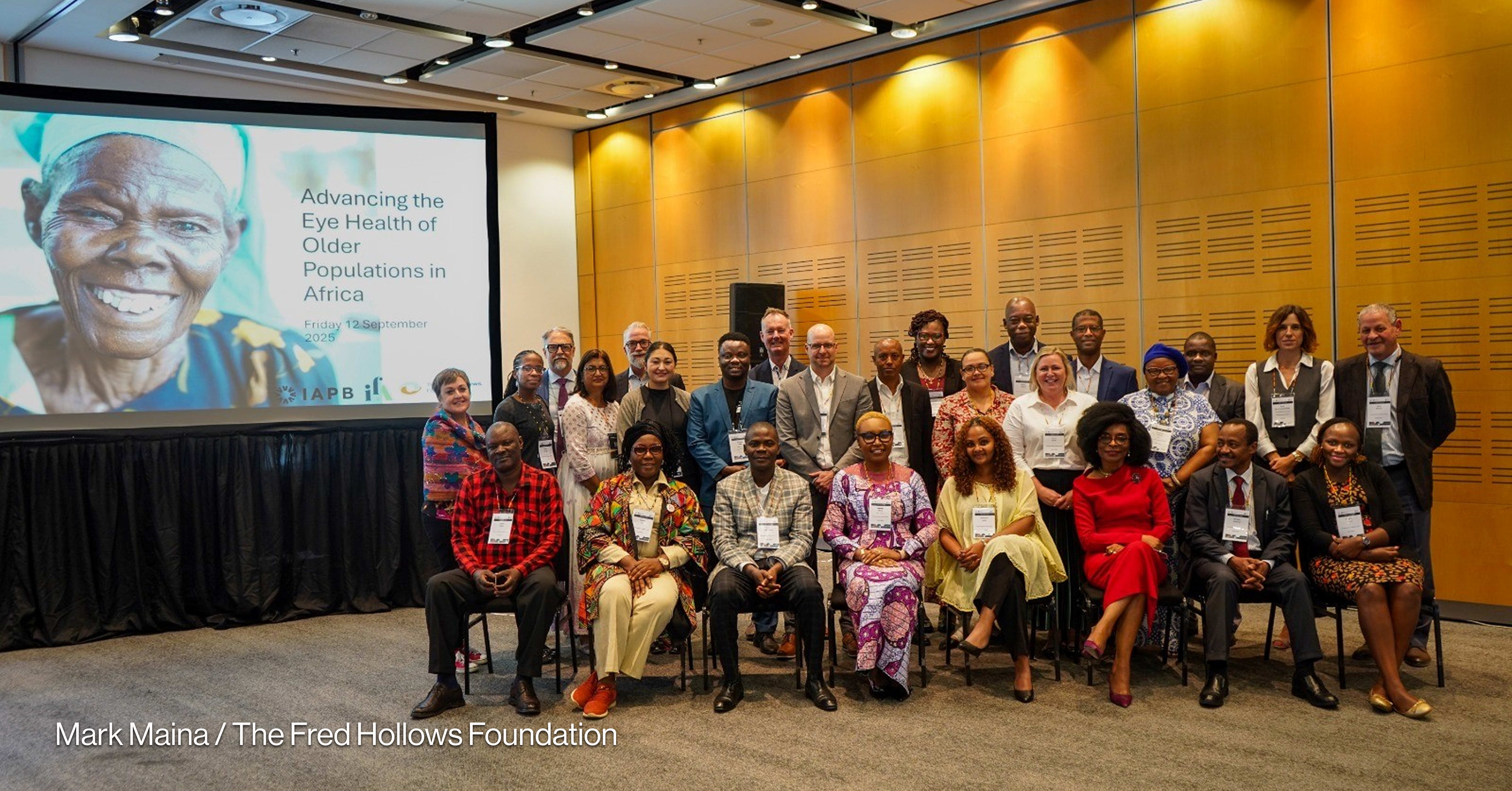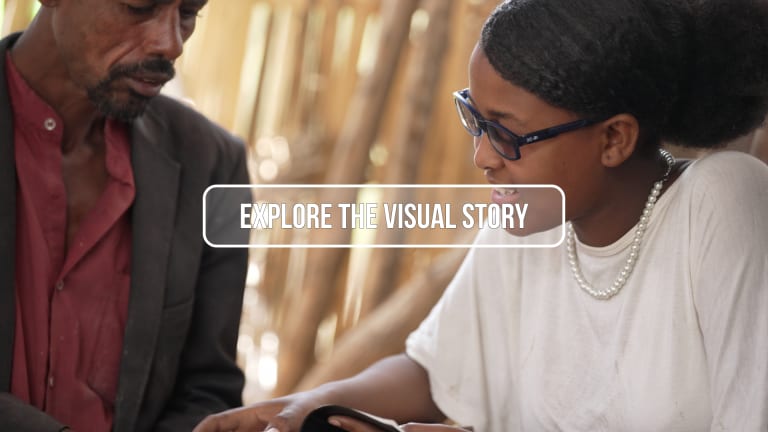
Good vision is at the heart of so many of the challenges facing societies today. Access to a pair of eyeglasses is not just about seeing clearly; it is a cornerstone for breaking barriers and creating a level educational, social, and economic playing field. The Lancet Global Health Commission's report on global eye health makes it clear that “improving eye health is a practical and cost-effective way of unlocking human potential. Eye health needs to be reframed as an enabling, cross-cutting issue.” When we prioritize good vision, we open doors to better education, stronger economies, and greater gender equality.
Uncorrected poor vision affects 1 in 3 people globally, making it one of the most widespread health challenges. Around 1.1 billion people live with vision loss, yet only 36% of those with distance vision impairment have access to proper glasses, leaving millions without clear sight. By 2050, half the world's population is projected to be shortsighted, with one billion people at risk of permanent vision loss.
In addition, over 800 million people live with near vision impairment, a problem easily addressed with reading glasses. Research also shows that the prevalence of uncorrected poor vision varies greatly across the globe. The Lancet Global Health Commission report indicates that 90% of those with vision loss live in low- and middle-income countries.
The challenge goes beyond the numbers. Many of those living with uncorrected poor vision face significant barriers to accessing care. Geographic isolation, a shortage of eye care professionals, and limited health care infrastructure all contribute to the difficulty in accessing even basic vision services such as screenings. In many parts of the world, accessing vision care is a matter of crossing the last mile. We have the affordable solutions we need to create the access and awareness needed to ensure no one has to live with poor vision.

And now we have a global commitment. Earlier this year a significant milestone was reached when the World Health Organization launched SPECS 2030, an initiative that aims to ensure that everyone who needs corrected vision has access to quality, affordable, and people-centered services, no matter where they live. SPECS will serve as a collective call to action to governments, NGOs, donors, and other vision care advocates that will truly be transformative when it comes to ensuring that good vision is accessible to all.
Unconventional solutions will be key to improving access. One promising approach is telerefraction, which combines new technology with traditional methods for assessing how well patients can see. A recent study in India tested the use of trained technicians and remote optometrists to deliver vision care in underserved areas. The study found that telerefraction results closely matched in-person exams, showing that this method could help fill the gap in eye care professionals and improve access in hard-to-reach regions.
Training the next generation of vision care technicians
A key part of the OneSight EssilorLuxottica Foundation’s sustainable programming is the training of underemployed and unemployed youth in the community to become micro-entrepreneurs and trained vision care technicians.
Upon completion of the program, they can then provide vision correction services in their communities. It is a unique approach that provides vision correction, skills development, and job creation. A significant outcome of this project has been the empowering of women, who have seen their status in rural communities elevated as they become the primary breadwinner in their families. The opportunity has also offered them the independence to grow in a career.
In Kenya, a partnership between the OneSight EssilorLuxottica Foundation, Kenya Society for the Blind, the Christian Blind Mission, and the national government has seen the successful implementation of telerefraction in the public sector, taking refractive services to the primary health care level. Expanding refractive services at the primary level will become the engine for scaling up access for communities that lack the resources to secondary and tertiary level services in regional and national capitals due to their distance from health facilities.
Innovations like these are promising to expand the reach of services.
A collaborative approach is key to transforming vision care. Diverse perspectives and resources from intergovernmental and nongovernmental organizations, academic institutions, the private sector, and philanthropic foundations can ensure an approach that addresses the issue from all angles.
All of these efforts require a change in mindset, where all sectors are working in collaboration and complementing each other to ensure their expertise and innovations reach every person who requires a pair of spectacles and does not have them.








